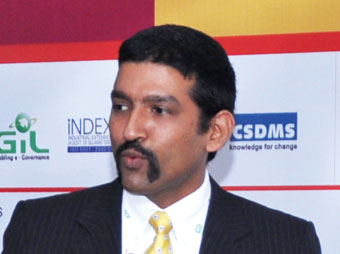
 Dr Kishan Rawat, Consultant at Department of CT Scan and MRI, Sir Ganga Ram Hospital (SGRH) talks about the challenges that the teleradiology industry is facing. He dwells upon the few feasible models, which can encourage exchange of medical imaging data for better diagnosis.
Dr Kishan Rawat, Consultant at Department of CT Scan and MRI, Sir Ganga Ram Hospital (SGRH) talks about the challenges that the teleradiology industry is facing. He dwells upon the few feasible models, which can encourage exchange of medical imaging data for better diagnosis.
www.sgrh.com

The teleradiology systems involved in the exchange of medical imaging data basically deals with three issues – data privacy, authenticity and integrity. It is important to make patient-specific data quickly available and usable to many specialists at different geographical sites. We look forward to integration of audio and videoconferencing with collaborative virtual reality images. A tele-immersive radiological system has been developed for remote consultation, surgical preplanning, postoperative uation and education. There are various tele-immersive devices such as Personal augmented reality immersive system (PARIS), Configurable wall (C- Wall), Physicians personal virtual reality display and Immersa Desk. Such devices provide augmented reality and avoid an important stereo vision depth perception conflict.
A tracking system with two sensors has been installed on the PARIS, which can generate stereo images from the viewers perspective and let the user interact with the data directly in three dimensions. It allows superior interactive visual display of medical data and also facilitates ability to interact over networks with collaborators in remote locations. A web-based teleradiology system called MITIS records all the necessary medical information, patient data, examinations, operations and advanced image-processing tools for the manipulation, processing, and storage of ultrasonic and mammographic images. Web-based collaborative clinical teleradiology is recently introduced to eliminate the radiation dose by continuous physical presence in the catheter lab. Digital images from imaging modalities can be transferred without any loss of information and remote experts involved in surgical interventions or preoperative planning sessions.
The radiologists are now looking at feasible models such as Nighthawk Model and Indian Model. The Nighthawk Model relocates fully licensed domestic radiologists to a country in eight to 12 time zones ahead of the home country. The existing licensure systems are compliant and hospitals doing business with Nighthawks do not need to fear being sued for negligent hiring or supervising of their radiology staff. The only disadvantage the model bears is that the domestic radiologists are relocated overseas. This leads to labour shortages in the home market. The model is not a price-competitive alternative to traditional radiology. On the other hand, the Indian providers hire unlicensed indigenous radiologists who are willing to work for one tenth the wages of radiologists in developed countries. The country has scarcity of quality radiologists in tier 2 and tier 3 cities, remote diagnostic centres want quality reporting to increase revenues, reduced time and cost of travelling is required to increase healthcare penetration in remote area. The infrastructural limitations such as network functionality and bandwidth availability are a major reason for failure of teleradiology in the country.

The teleradiology system developed for combat support is also suitable in humanitarian and disaster-relief operationsperformed by armed forces. The industry needs skilled medical care to patients who are isolated from the specialised care.
Be a part of Elets Collaborative Initiatives. Join Us for Upcoming Events and explore business opportunities. Like us on Facebook , connect with us on LinkedIn and follow us on Twitter , Instagram.











